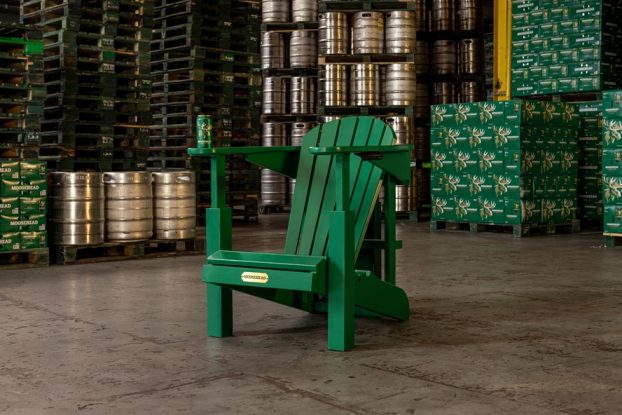Also in this special report:
* Quebec media market heats up: With the economy on the rebound, and a renewed sense of confidence in the business community, national advertisers are again starting to invest in media p.B12
* Coke gets tough in Quebec market: Competitive spots seek to portray Pepsi as a pale imitation of The Real Thing p.B15
* CKMF, Tele-Quebec get image makeover p.B17
* Musee lets down its hair: Cultivates down-to-earth image in an effort to become ‘the people’s museum’ p.B18
When asked to liken Les Rotisseries St-Hubert to a car model, one recent focus group chose an old station wagon with wood paneling.
Not exactly the kind of image that this 46-year-old restaurant chain – or any chain for that matter – would want to cultivate.
‘St-Hubert is perceived as very conservative,’ says Francois Langis, director of marketing for the Laval, Que.-based company.
That, frankly, is an understatement.
The St-Hubert name has long been associated with family-style restaurants specializing in roast chicken dinners. In the past four years, however, the chain’s 85 restaurants have undergone drastic menu changes, and now offer customers a much wider range of meal choices, as well as better pricing. The tag line developed to accompany this effort – ‘So much more’ – has done a creditable job of communicating the fact that things have changed.
Replacing the chain’s staid, middle-of-the-road image, however, isn’t so easy.
‘We want to be more appealing to baby boomers,’ says Langis. So recently, St-Hubert decided to take a concept it had already started to introduce into a few select restaurants, and expand that as part of the overall marketing strategy.
The concept is ‘St-Hub’ – a separate, casual eat-in bar within each restaurant. Dark wood, comfortable seating, craft beers, several tv sets and the sound of jazz or blues on the speakers – all of these run counter to the family-restaurant image. Which makes it exactly the kind of place baby boomers would frequent.
‘It’s what we call a micro-climate,’ says Langis. ‘It’s still a St-Hubert’s, but it’s a cooler place to be.’
So far, 25 St-Hubert restaurants have a St-Hub area, and Langis says he expects all 85 to have one within three to five years.
‘We’re really rejuvenating the brand,’ he says.
A recently-launched tv campaign from Montreal-based Saint-Jacques Vallee Young & Rubicam reflects the chain’s new stance.
Langis says they wanted something younger and more entertaining. ‘The previous [campaign] was really a menu campaign,’ he explains. ‘Now we want to bring back more fun – it’s a campaign that’s much more close to people.’
It’s also intended to be a lot funnier.
There are five spots in all, and none takes place in an actual restaurant – a first for St-Hubert, according to Langis.
One spot features two men out moose hunting, and dreaming of what they’ll do with all the moose meat. When one asks the other what part of the moose he wants, the intrepid hunter replies, ‘The white meat,’ as an animated red rooster comb (part of the familiar St-Hubert logo) appears above his head – revealing that he’s really been thinking of St-Hubert chicken all along.
That’s followed by the line (roughly translated), ‘It’s normal to have St-Hubert on your mind,’ and the tag, ‘Ca va etre bon.’
The second spot features a couple making out in a car, as the convertible roof rises and falls. The woman, who is making advances on the man, wonders why he isn’t responding. When she demands to know whether he’s thinking of something else, that unmistakable red comb (a ‘head-on’) pops up.
The other three spots are variations on the same theme. One features a hockey player who pops his comb while his coach lectures him, another a young urban professional type, who does it at home while his co-habitant discusses finances. The last shows a mother whose efforts to put a toque on her child’s head are thwarted by – you guessed it – that pesky red comb.
Langis says these spots go well beyond the informational approach of the past, and help demonstrate that St-Hubert is not nearly so dry as some people might think.
Langis says that because the St-Hub concept is still so new, and has not even been added to half of the restaurants yet, it was not formally introduced in the campaign.
‘We’ll incorporate it slowly,’ he says. ‘We won’t make a big splash just yet.’
As for the company’s expectations for the campaign, Langis returns to the car analogy. ‘We hope that with this campaign, we can move to a more contemporary model. That’s the plan.’
Advertising, however, is only part of the restaurant chain’s overall strategy for rejuvenation, and Langis doesn’t expect it to do the job alone. ‘It’s part of everything else,’ he says.























